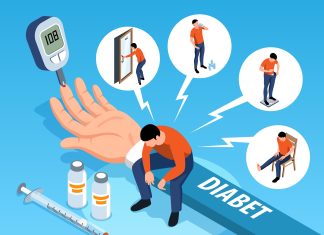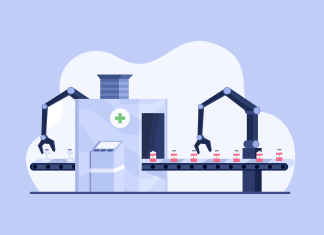The features of biosimilars are not only in their research and production procedures but also in their registration process in different regions. Roman Dray, GEROPHARM R&D Centre Director, told GMP News about what needs to be taken into account and what differences there are in each of them.
FDA and Latin America
The regulatory policies of Latin American countries are influenced by the proximity of such a strong regulator as the FDA, so their guidelines, including those for biosimilars, are very similar to the U.S. guidelines. This creates certain difficulties for us, since Russia is more influenced by the European Union. Our comparability studies fully meet the requirements of the European Medicines Agency, but there were, at least until recently, differences between the EMA and the FDA. For example, we and Europe do not require animal toxicity studies to register insulin biosimilars, whereas in Latin America they are mandatory. Also, in the U.S., comparative clinical efficacy studies were previously required. This significantly increases the required sample of subjects for trials and, accordingly, the time and cost of conducting the trials. At the end of 2019, the FDA issued a draft of a specific guideline on insulin biosimilars, and now the requirements have become very similar to those of the EU. I think that the Latin American countries will also make the same amendments in the near future.
However, the difference in the regulatory policy did not prevent us from submitting a registration dossier for all forms of release of our recombinant human insulins, as well as insulins lispro and glargine, to CECMED (the regulatory agency of the Cuban Ministry of Health) and Instituto Nacional de higiene Rafael Rangel in Venezuela. We had to adapt to their requirements and conduct several additional studies, including toxicity in rodents.
We’re also preparing to make our submissions in some other countries of the region. This process is quite complex, but in those countries where it is standardised according to modern ICH[i] requirements, we do not experience any special problems, since we converted our dossiers to CTD[ii] (Common Technical Document) format back in 2018–2019. Now, the preparation takes much less time than the first time. Most of the time is spent on adapting the first module[iii], [MOU1], which is specific to each country, and on checking the dossier by the partner (the company that we cooperate with to bring the drug to market) before submitting it. This is a routine and simple process for us, since we have a master dossier (mCTD) in three languages: Russian, English and Spanish, which are updated immediately when we receive new information about our products. For example, the preparation and submission of the dossier to Vietnam took us two months only, and they were months of summer vacations. The same situation occurs in some other countries: it takes more time to find partners and negotiate with them than to form and submit the documents.
Registration in the EAEU. Simple, but with certain features
In the EAEU countries everything is very simple on the one hand but there are certain features on the other. The registration process is simplified by the fact that Russia, Belarus, Armenia, Kazakhstan, and Kyrgyzstan now have a unified supranational legislation. Most of its documents were adopted in November 2016 and ratified in May 2017. This is why we initially built our R&D programs in accordance with these guidelines. However, law enforcement practices vary slightly from country to country. For example, our partners in one of the countries, when reviewing our dossier, suggested that we would have to shift the focus of our Phase III clinical study from immunogenicity to efficacy. Thus, they proposed to change the name, endpoints, statistics, and sample. We were also warned that a post-registration clinical trial would be required. In general, unlike the EU and the U.S., we focus more on clinical research data than on analytical and functional comparability studies. This is not quite the right way, because for biosimilars, and especially for insulin biosimilars, data from analytics and non-clinical pharmacology are much more important than clinical research data. We discuss this every time with our partners and in some cases with regulatory agencies. In most cases, we come to mutual understanding.
We also submitted a registration dossier for our insulins in Azerbaijan. The regulatory requirements are a little bit different from those of the EAEU, but we are ready to adapt and now we already have enough data to meet all the requirements.
Registering insulins in Europe: a long and expensive way to prepare a dossier
Our current big goal is to register our insulins in the EU. We are well aware of the path that we need to take, and we understand that it will not be fast and very difficult, but it will be feasible.
The problem is that there is no procedure for mutual recognition of data on drug characterisation and inspection results (GMP, GLP, GCP) between our countries. EMA experts are generally reluctant to accept data obtained in Russian laboratories and centres. Besides, in order to register a drug in Europe, it is necessary to conduct clinical trials on a EU population. Another prerequisite is to conduct comparability studies with a reference medicinal product that is available in the EU. This means that, for the first, second and third steps, we need to buy a сomparator in Europe, or we must prove that there are no differences between the reference medicinal product, e.g. Lantus, which is marketed in the EU and in the Russian Federation. This requires us to conduct almost full additional comparability studies between reference medicinal products. Therefore, despite the very similar guidelines for the development, production, and research of insulins in the EU and in the Russian Federation, there are a lot of small points that require careful consideration when preparing a dossier for submission to the European Medicines Agency to obtain scientific advice.
We will have to repeat almost all comparability studies because our programs were based on a reference medicinal product that is only available in the Russian Federation. I think that the EMA will also offer to repeat clinical studies for the same reason. All this was found out as part of the scientific advice provided by EMA experts, which is an almost mandatory procedure before registering a drug candidate and submitting a dossier for obtaining permission for clinical trials, where experts review our data and give recommendations for further actions to register the drug.
At the same time, the procedure of scientific consultation is not cheap: about EUR 90,000 for a biological drug, and each subsequent meeting also costs a lot.
Generally, a pharmaceutical company can seek scientific advice from the EMA at any stage of drug development. Experience suggests that it is best to do this before starting a clinical trial when the company has already accumulated enough data for a preliminary assessment but the development has not yet gone too far and the company has not invested too much, should the experts recommend to stop, or to redo something or to add finishing details. Worst of all is when a company, without scientific advice from the EMA, conducts all non-clinical and clinical trials and receives a request for additional data during the examination of the dossier. This can result in the need to recall the dossier and waste a huge amount of time or money if, for example, the wrong clinical endpoints were chosen for clinical trials or an insufficient number of patient days has been obtained.
Scientific advice should also be sought if the EMA guidelines do not fully describe the requirements for the data obtained, or if the company plans to deviate from the guidelines. This is also possible.
In order to initiate the scientific advice procedure, a pharmaceutical company must write an application followed by a description of specific scientific questions that it plans to get answers to. EMA experts validate these questions for their scientific relevance and consulting area. Then, two coordinators are appointed, each of them forming a team of evaluators who independently review the data obtained and answer the questions received in the form of a report. As a result, the company receives a report and an opportunity to discuss issues if necessary or if it does not agree with the opinion of experts. At the same time, the coordinators can involve experts from different fields, including the Committee for Advanced Therapies (CAT), the Committee for Orphan Medicinal Products (COMP), and even patients. As a result, a final report is generated and sent to the pharmaceutical company.
Accordingly, we must prepare the data of the highest possible quality for experts to get a clear and transparent response from them, as well as recommendations for our drugs. This is what we are doing now. We had plans to conduct the scientific advice product in 2020 but unfortunately the pandemic got in the way. I think that in 2021 we will definitely conduct it with the EMA experts, with subsequent registration actions.
[i] ICH stands for the International Council for Harmonisation of Technical Requirements for Pharmaceuticals for Human Use. It is an advisory supranational body that brings together regulatory authorities from various countries to discuss the scientific and technical aspects of pharmaceuticals and to develop guidelines. In view of the above, the countries which are part of the ICH or recognise the ICH guidelines have similar guidelines for the development, registration and manufacture of medicinal products. On the one hand, this facilitates access to high-quality drugs, and on the other hand, prevents the spread of low-quality drugs in the markets of these countries thanks to a unified approach to the evidential basis of efficacy, safety, and quality.
[ii] CTD stands for Common Technical Document that is submitted by a pharmaceutical company to a regulatory authority to evaluate the efficacy, safety and quality of a medicinal product. In many countries that recognise ICH guidelines, the dossier structure is harmonised, which significantly expedites the collection and documentation of necessary information by the company and its examination by the regulatory authority. Currently, some countries use an electronic dossier format, but there are also paper dossier submissions.
[iii] A drug dossier consists of 5 modules, 3 of which contain detailed information on quality (Module III contains information about the substance and the dosage form, formulation development, and transfer, manufacture, analytical methods of quality control, etc.), safety (generally, Module IV contains data on non-clinical studies of specific pharmacological activity in animals, pharmacokinetics and pharmacodynamics in animals, acute, subacute and chronic toxicity in animals, mutagenic and allergising effects, etc.) and efficacy (generally, Module V contains information about all clinical trials). Module II of the dossier contains summary information about Modules III, IV, and V, and Module I is a country-specific module. It contains an application for registration, describes the packaging, instruction for medical use, and other information specific to each country.




